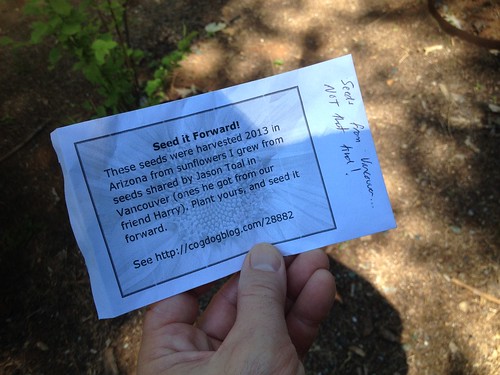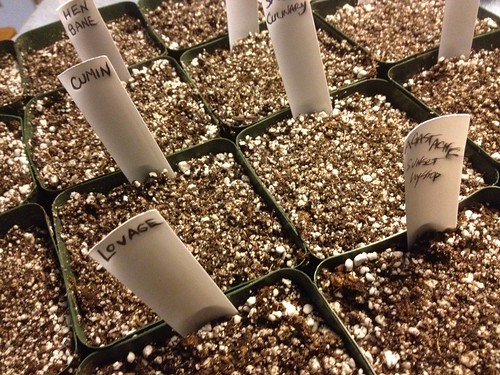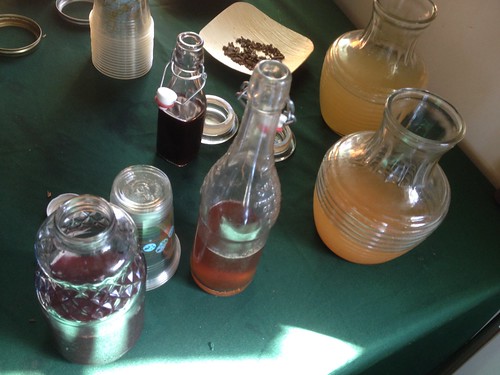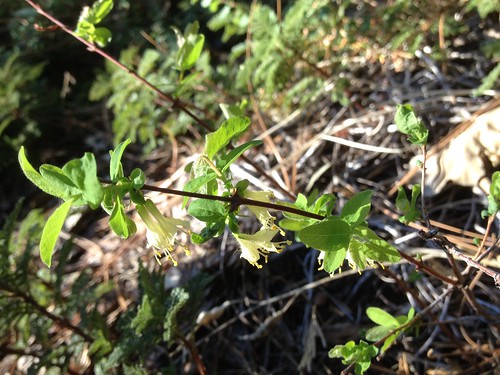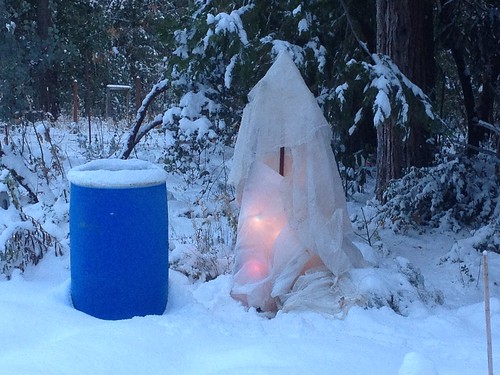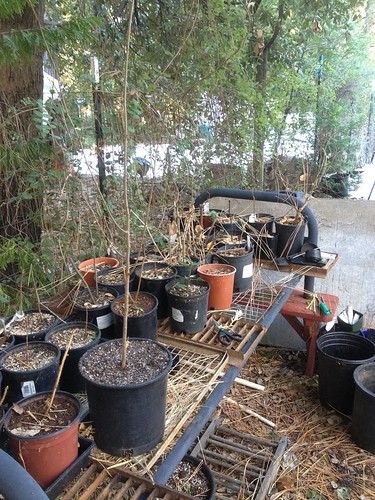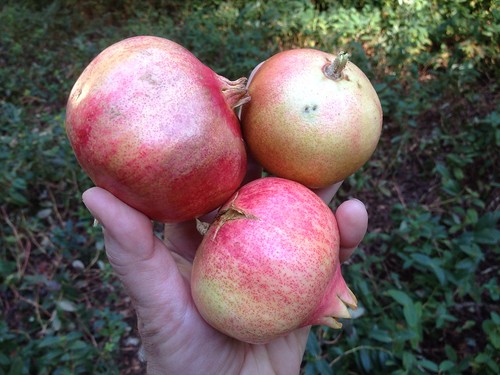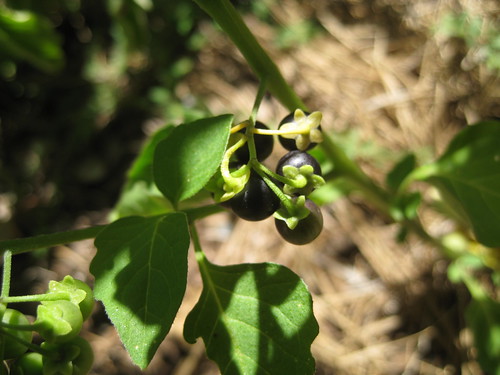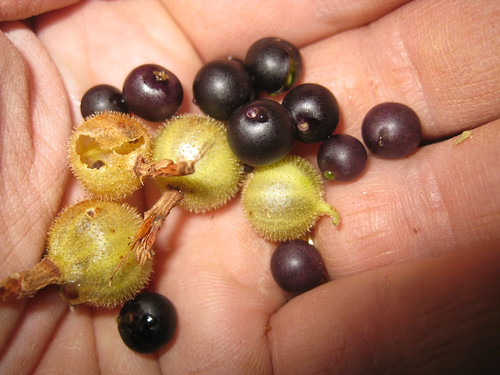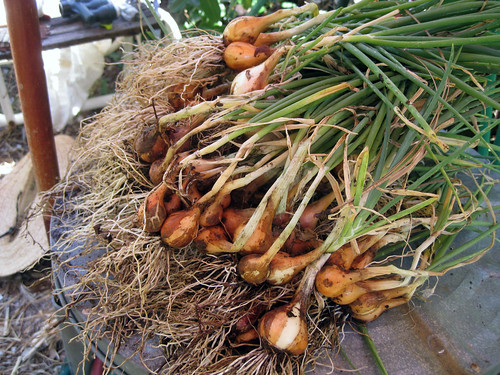Spring is convincingly here, and many plants are picking up steam, budding and leafing out and stretching and flowering. I spent some time over the last few days planting and pruning and preparing, and it’s good to be out in the garden again, though it looks to be a very hot and very dry season.
Seeds arrived in the mail the other day, these from my friend Alan (@cogdog), who gardens in Strawberry, AZ. He sent sunflower seeds he saved from plants grown from seeds sent to him by Jason (@draggin), who gardens in East Vancouver, BC, from seeds given to him by Harry (at the time a BC gardener), who got the seeds from The Harmony Garden Harmony Garden on the Capilano Reserve.
Squirrels ate my sunflowers last season, and I didn’t have any seeds to share, so this year I’m starting them in the nursery for protection. I’ll move them out to the garden in a couple of weeks when they’re big and strong, and if they survive, I’ll put some in the FLC Seed Library, send some to Kate (she of Bootjack Garden fame, and an inspiring gardener besides), and share the rest forward (and backward)!

